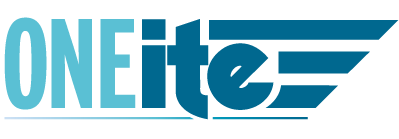Governance
 District, Section, and Chapter (DSC) Management –Organizing Documents and Relationships
District, Section, and Chapter (DSC) Management –Organizing Documents and Relationships
ITE has 11 Districts, 72 Sections, and 11 Chapters. Sections and Chapters provide local networking and member activity. Districts provide regional groupings to expand information sharing and networking across geographic regions providing members with leadership opportunities. The Districts support Sections as a conduit of International communication, initiatives, polices, best practices and staff resources, bringing together the Section leaders. International ITE broadens the information sharing and networking internationally. ITE staff supports member services, professional development, publications, industry initiatives, research, partnerships, meetings, industry awareness and career advancement for its members.
Districts

Each level of ITE is established through governing documents.
- The International Board of Direction (IBOD) is governed by its constitution. It can establish and charter Districts.
- The ITE Model District Charter is here: Model District Charter
- Districts can charter (upon appropriate petition) Sections and Student Chapters. This is how a new Section can be formed. Here is a sample Section charter.
- Sections can charter Chapters (upon appropriate petition). Here are the Guidelines on Starting a Chapter and a copy of the Model Chapter Charter.
The mission and purpose of Districts, Sections and Chapters are all slightly different based upon their geographic reach, governance and focus:
Districts
 support the overall goals and objectives of ITE,
support the overall goals and objectives of ITE,- provide member representation on the International Board of Direction (IBOD),
- support and coordinate with the Sections within the District,
- support the interchange of technical and professional information,
- encourage membership participation and leadership opportunities through all levels of ITE; and
- support student and younger member programs.
Sections
- serve as the primary affiliation for ITE members at the local level,
- support the overall goals and objectives of ITE,
- support District activities and coordinate with the District in carrying out the Section mission and purpose,
- financially support and coordinate with Chapters within the Section,
- foster closer association of ITE members,
- encourage members to share knowledge,
- consider local transportation issue,
- collaborate with other local transportation professionals on matters of common interest,
- present points of view consistent with established ITE policies, and
- support and mentor students and student chapters within the Section.
Chapters
- serve as an extension of an ITE Section,
- have the same basic mission and purpose as a Section but operates as an extension of the parent Section to encourage closer collaboration on a more convenient local level and to promote leadership opportunities for ITE members.
- are typically formed in areas of a Section that are geographically distant from the location of the majority of the section member population.
- may become a new Section over time, if the number of members and level of activity grow to sufficient size.
Student Chapters
- Student Chapters are the gateway to ITE membership. A District may Charter a Student Chapter, upon the request of the student chapter and following these guidelines: Establishing an ITE Student Chapter. Modifications to the standard charter may be granted by the IBOD. Each chartered student chapter adopts bylaws, which must be filed with ITE headquarters.
- The ITE Student Chapter Manual, which includes approved Student Chapter policies and procedures as well as a sample charter and bylaws document, is located on the ITE Student Membership page.
- Sections are responsible for providing support to the Student Chapters within their boundaries. This includes providing a professional liaison to coordinate with both student leaders and the faculty advisor on ITE activities and member services. Section support can focus on career needs of students and their transition to young professionals of ITE.
Resources for ITE Sections
Over the past two years we hosted Section 101 orientations for our new Sections. That presentation focused on the key activities that each Section should focus on within the seven key functional areas: Section 101 Presentation.
What are the top ten expectations of an ITE Section? Based upon best practices and past Section reports, here are ten of the most common expectations of a Section:
- Host local meetings to provide technical content and networking opportunities for members – use ITE network to create topics and find speakers.
- Support Chapters within your section’s boundaries. This includes dues sharing for each Chapter and professional liaisons for each student chapter.
- Host social activities for local membership. Engage students and younger members. Consider pizza (free food for students), happy hours/pub/trivia night, run/bike/kayak, social events/golf tournaments, fund raisers, field tours.
- Communicate with members at least once a month via email, newsletters, social media and Section calendar (ITE Calendar).
- Actively recruit and nurture future leadership using committee positions as progressive paths to leadership, allowing interested members to participate.
- Gather Section leadership annually to consider coming years events for members including mobilizing and organizing awards/member recognition, scholarships, social events, STEM, committee work and key topics.
- Collaborate with Districts. Provide Section representatives to participate with District leadership in sharing best practices and ITE communication to members. Work with your District and ITE staff on Section needs such as virtual meeting platforms, website support, e-balloting, e-blasts, membership lists, tax ID/IRS issues and social media.
- Develop, document and share clear roles and responsibilities for Section leaders – updating them as changes occur.
- Consider leadership development opportunities like supporting Section leaders in participating in LeadershipITE or seeking mentoring from outside of Section.
- Submit an annual report update to Districts. The Districts share the top Section report with International ITE as part of an award selection.
Nomination of Section Elected Leaders
 One of the most important roles for Section leaders is identifying new leadership as terms transition every 3-5 years for most Sections. The following framework is offered as a means to focus on members who have the greatest ability and interest to help advance the mission of ITE.
One of the most important roles for Section leaders is identifying new leadership as terms transition every 3-5 years for most Sections. The following framework is offered as a means to focus on members who have the greatest ability and interest to help advance the mission of ITE.
Committee
The nominating committee shall be appointed by the Board. The committee may be chaired by the Past President. The composition of the committee should include representation of past officers and/or members as deemed appropriate by the Board. Committee composition should reflect ITE’s mission, be open and transparent and not be subject to influence of the active board members (to avoid perceptions of exclusivity, cronyism or cliques. The committee members should maintain the confidential nature and integrity of the process for the participants.
Potential Candidates
The routine process of nominee identification should be open, welcoming and transparent to all members. The Committee should provide notice of potential interest in leadership position to the membership in advance of the committee evaluation (one to two months). A deadline should be established for possible candidates to establish their interest in being considered by the nominating committee (considering charter and bylaw requirements). The Past President should encourage qualified individuals to come forward as candidates and the committee members should promote interest in participation to assure an adequate pool. A statement (written or informal) shall be obtained from each candidate to be considered confirming commitment and employer support.
Slate
The nominating committee should determine the slate they believe to be in the best interest of ITE. Pass-through nominations may be considered for previously elected positions. Newly elected positions should include two candidates. There can be overriding reasons to consider a three-person slate or a one-person slate. Consideration and evaluation should include, but not be limited to:
- Persons with the best qualifications for leadership in ITE (understanding of the organization, positive profile in the industry, active communicator, organizer, prior ITE participation (committees, council, papers/presentations), ability to manage non-profit fiduciary responsibilities, employer support, LeadershipITE experience, time commitment,....)
- Board balance of public and private representation (along with academic and/or industry/vendor)
- Diversity of Board composition (technical background, engineering/planning, gender, demographics, age, other factors)
- Geographic representation (rotation, as deemed appropriate)
Once the slate is determined the Chair should contact all candidates to notify them of the decision and provide details to those on the slate of the election process/deadlines.
International Election Code of Conduct and Social Media Guidelines
The election code of conduct and Social Media Guidelines are provided for your reference and can be adapted to your Section requirements.
Oath of Office
The ITE Oath of Office was edited and approved in January of 2022. You can access it here: Oath of Office
Strategic Planning Documents
The One ITE Committee developed strategic planning documents to help your District or larger Section go through the process of strategic planning. These templates were both used and developed through a process the Mountain District employed in developing their strategic plan and are intended to help you organize and plan.
Strategic Plan District Template
Strategic Planning Session Sample Agenda
District and Section Procedures Documents
The One ITE Committee developed this District Procedures template to help our Districts establish a single reference document containing pertinent information related to the governance and procedures established by the District. The District Board should periodically review the policies and make amendments as necessary to assure that the written policy accurately reflects the current and desired operations of the District.
Unless stated in the Institute of Transportation Engineers (ITE) Constitution, District Charter or District Bylaws, the policies and procedures described herein should be considered as guidelines for officers and committees of the District.